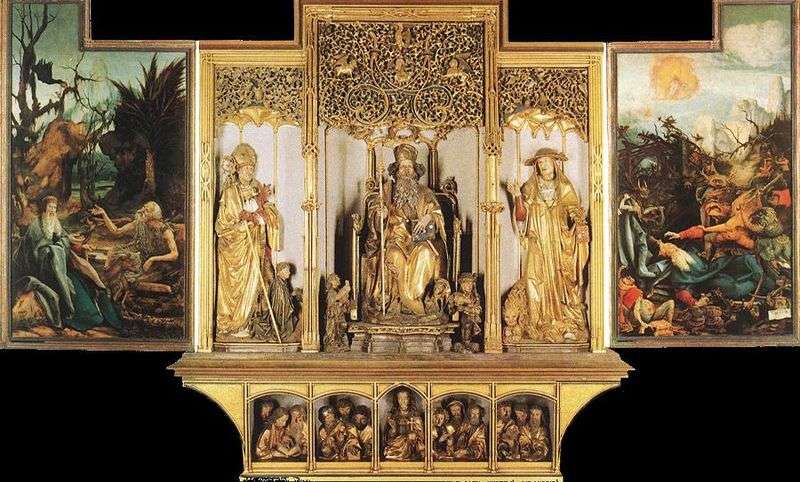
The altar was ordered to Grünewald by the order of antonies for his monastery in Isenheim. This once flourishing monastery was founded at the end of the 13th century by the monks of the Order of St. Anthony. Saint Anthony was considered a healer of epidemic diseases: cholera, anthrax and one of the hardest forms of gangrene, which is still called “Antonov fire”.
The first and second sweep of the Isenheim altar was performed by Matthias Grunewald. The third one was made by the skilled Alsatian master wood carver Nicholas of Hagenau in 1505. However, we will also consider it, in order to have a complete picture of this unique work of art of the late Middle Ages.
Once the Isenheim altar was in the Anthony monastery in Isenheim and was revealed on the third sweep only on January 17 on the day of St. Anthony. During the solemn meetings of the monastic brethren the second wing of the altar opened and wooden painted figures of St. Anthony appeared on the throne, to the left of St. Augustine and to the right of St. Jerome.
The figure of St. Anthony is made in human growth, he sits on the throne with attributes and signs of dignity. Over it stretches a canopy of thin gilded carved lace with the symbols of the four evangelists. On the left is the St. Augustine in the episcopal vestments, on the right – in the cardinal garments of St. Hieronymus.
On both sides of the statue framed the compositions of Matthias Grunewald, written on the inside of the second flaps: “Visit to Antony Paul the Hermit” and “Temptation of St. Anthony.”
The painting “Visit to St. Anthony Paul the Hermit” is full of blissful peace. Two holy elders lead a leisurely conversation against the background of a peaceful pristine landscape. There are many charming details in the picture: the hand-made doe, the hermit Paul at the feet of the hermit, the crow that bears the host and the guest in the beak, the exotic palm tree among the mossy German cliffs, medicinal herbs that the artist has depicted with the accuracy of the botanist.
The painting “The Temptation of St. Anthony” contrasts sharply with the previous one: the old man is overcome by the demons one more disgusting than the other. Tear, pinch, dragged by the hair. Each of them personifies one of human vices, but most terrible are those whose bodies are disfigured by diseases – gangrene, plague, epileptic convulsions. This is a hint of the known temptations that accompanied the saint in life.
Antony the Great is a holy hermit of the 4th century. The plot of the temptation of St. Anthony is built around the struggle of the saint with temptations, which he called “demons.” The demons in medieval painting were often portrayed in the guise of wild beasts and monsters torturing his flesh, they overcome the saint in his cell, lift him up, but disappear as soon as God is in bright light. Anthony chases them with a sign of the cross or prayer.
 Isenheim Altarpiece by Matthias Grunewald
Isenheim Altarpiece by Matthias Grunewald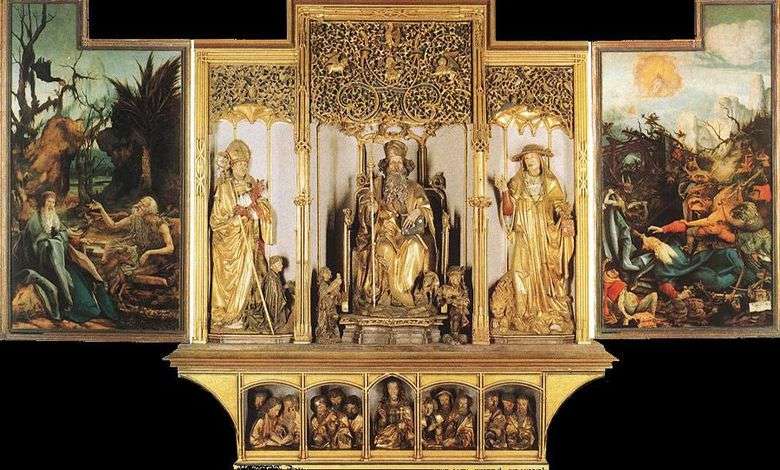 Composición de la escultura del altar Isenheim – Matthias Grunewald
Composición de la escultura del altar Isenheim – Matthias Grunewald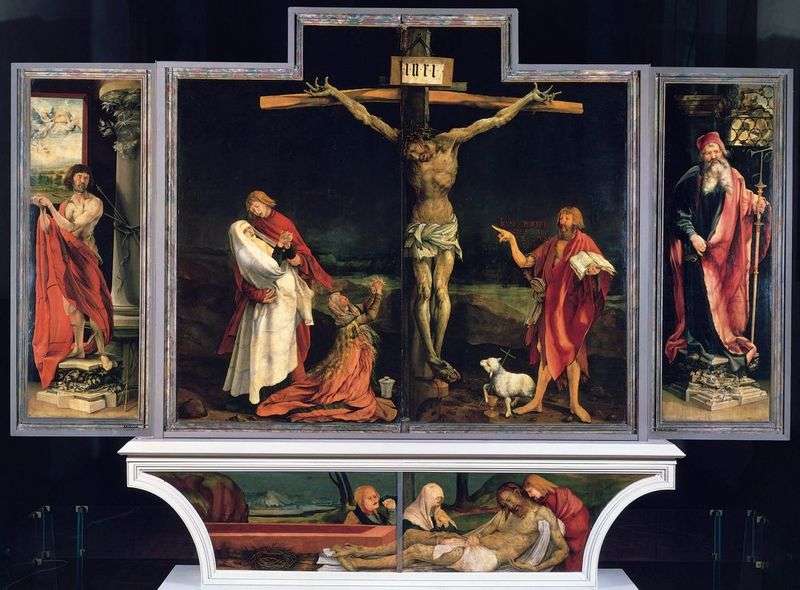 Isenheim altar, the first reamer by Matthias Grunewald
Isenheim altar, the first reamer by Matthias Grunewald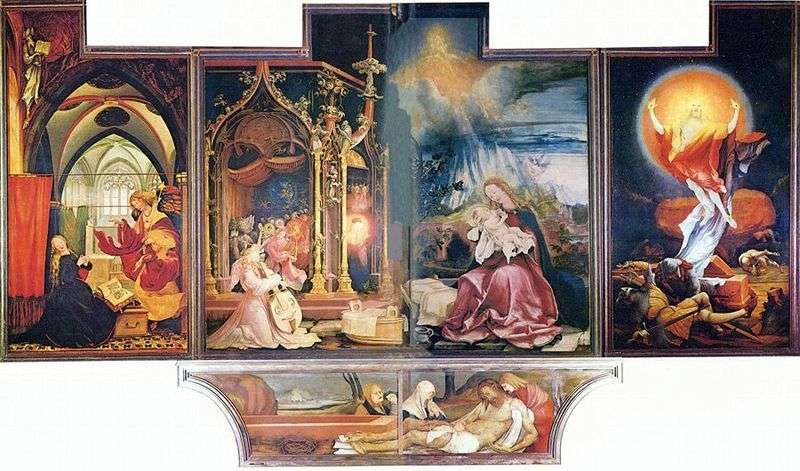 Isenheim altar, second sweep by Matthias Grunewald
Isenheim altar, second sweep by Matthias Grunewald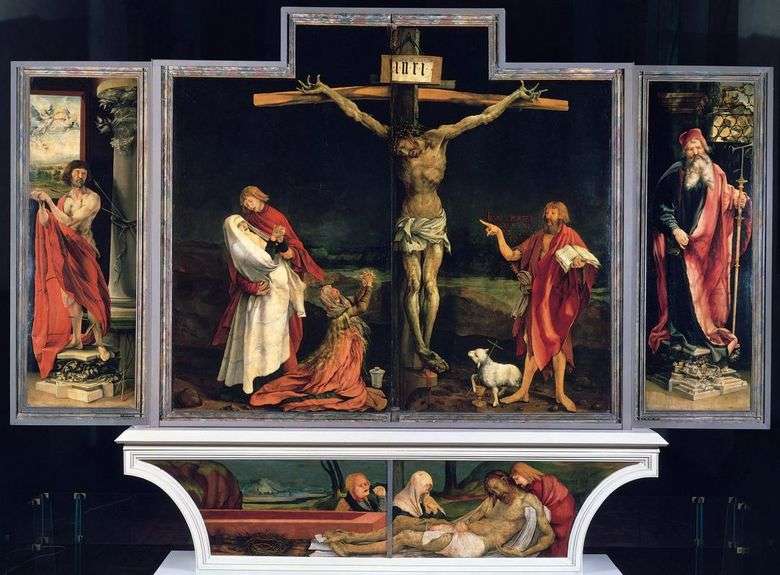 Isenheim Altar, el primer barrido – Matthias Grunewald
Isenheim Altar, el primer barrido – Matthias Grunewald Altar de Isenheim, el segundo barrido – Matthias Grunewald
Altar de Isenheim, el segundo barrido – Matthias Grunewald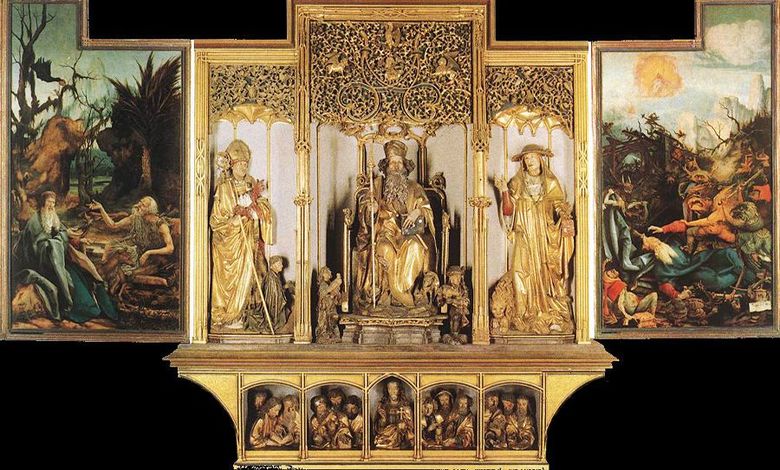 Sculpture d’autel d’Isengheim – Matthias Grunewald
Sculpture d’autel d’Isengheim – Matthias Grunewald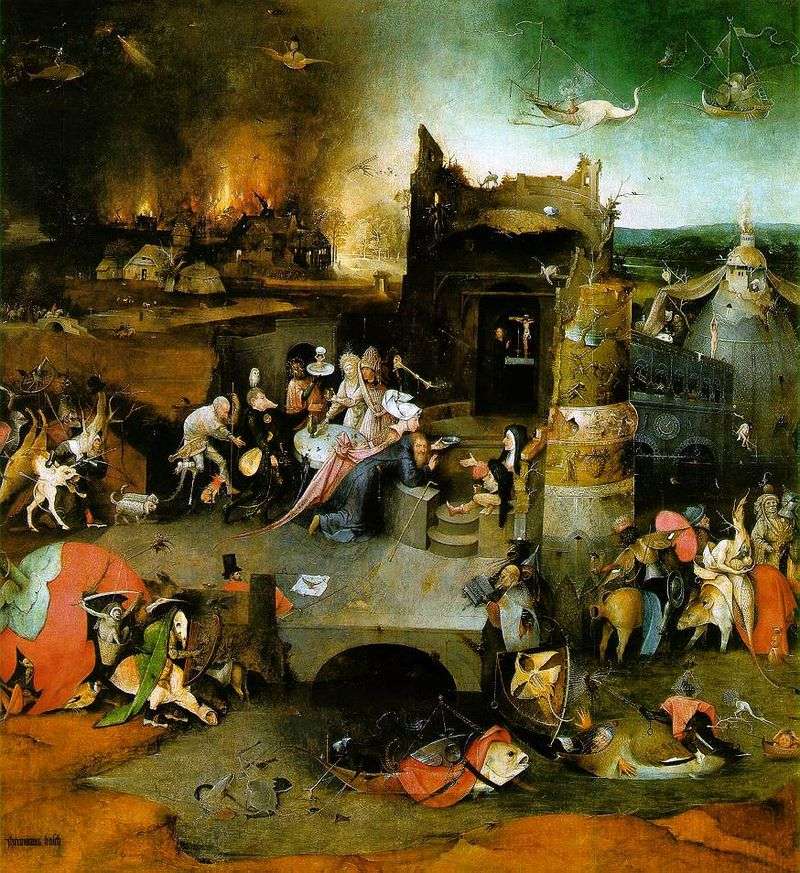 The altar of St. Anthony. The central part of the triptych is Hieronymus Bosch
The altar of St. Anthony. The central part of the triptych is Hieronymus Bosch